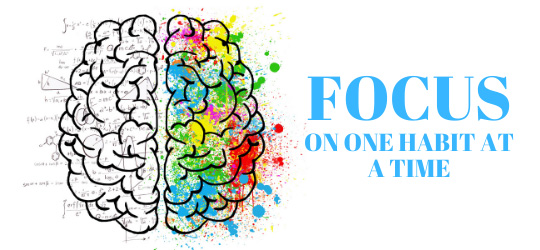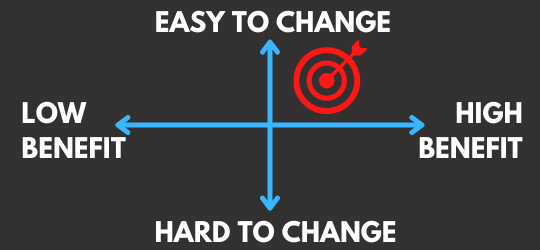Habits are the brain’s way of automating tasks to conserve energy.
When you drive to work each day, you probably follow the same route. You don’t have to think about every turn you make. You just drive.
If you had to stop and consider each small decision before acting, it would be incredibly time-consuming and inefficient.
To avoid this, your brain develops behavioral patterns that you repeat without much conscious thought. For most of the day, your brain just drives.
It’s important to understand this because it explains why changing habits is hard. It’s much easier for the brain to stick with what it knows than to spend energy learning how to do something differently.
Focus on one habit at a time

Around the start of every new year, millions of people make a resolution to get in better shape. They ditch the “bad” foods, start a new diet, join a gym, or start a new at-home training program.
At first, everything goes well and progress comes easy. But sooner or later, that progress slows down. Inevitably, workouts become less frequent, diets become less strict.
Sooner or later, all the positive lifestyle changes are gone and the old lifestyle habits have returned.
Everyone in fitness knows this story because it’s so common.
One of the biggest reasons this happens is because rewiring the brain to change one habit takes time and energy. Trying to change nearly everything about your lifestyle at once is next to impossible.
To give yourself the greatest chance for success, it’s hugely important to work on changing just one habit at a time.
This is critical, because each time you try to change an existing habit, your brain has to expend more energy to consciously override your ingrained behavior.

Even if it may seem small, it’s still work for the brain to establish new patterns and routines.
When you try to create too many new behaviors at once, it requires too much mental energy and the brain often pushes back. The general rule is that the more you try to change at once, the less likely any of the changes will stick.
That’s why the biggest key to building successful habits is to focus on building only one new habit at a time.
How to know what to change
Once you accept that you’re more likely to change your behaviors if you only focus on one at a time, the next question is, how do I know what to change?
To answer that, we can come back to the idea of energy. Choose which habit you want to change by identifying what will require the least amount of effort and lead to the greatest fitness benefit.
In other words, start by changing a habit that’s:
A) relatively easy to change, and
B) will have a real impact.
Avoid trying to change habits that are difficult (energetically expensive) and only provide a relatively small benefit in return.
You can use the chart below to help visualize this concept.

For example, let’s say Morpheus has helped you identify that sleep is a big weak link in your recovery and something you need to improve.
After evaluating why your sleep isn’t what it needs to be, you realize that the biggest problem is your caffeine habit. You often consume caffeine much closer to bedtime than you should, and it’s hurting your sleep.
Switching to non-caffeinated beverages after a certain time of the day shouldn’t be incredibly difficult, and it could definitely lead to a big improvement in your sleep.
This is exactly the kind of habit you want to focus on changing; over time, many small changes like these can lead to very big differences in results.
Action step
Take a few minutes to identify the lifestyle factor you think is impacting your recovery most negatively.
From there, pinpoint 3-4 key behaviors and daily patterns that are driving this lifestyle factor. Use these to fill in the chart above and narrow down a single habit.
Make sure it’s one that you know you can change over the next 30 days.
Then get to work.
